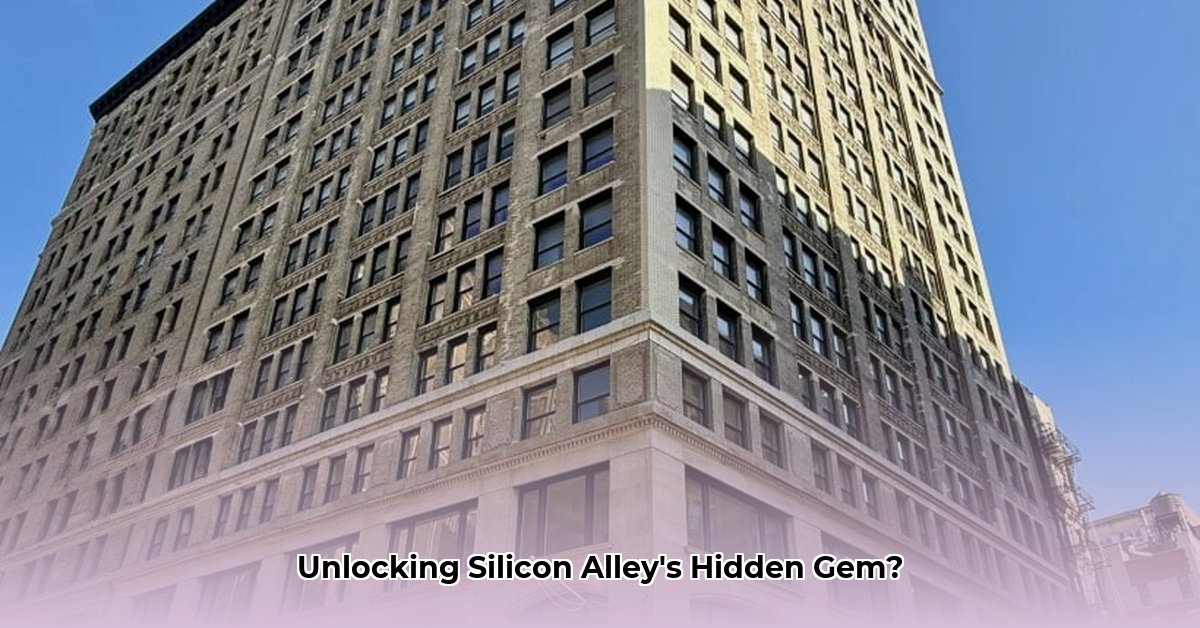
A Case Study of 902 Broadway's Success in the Flatiron District
902 Broadway, situated in Manhattan's Flatiron District, represents a compelling case study in the successful integration of historical preservation and modern technological office space demands within the competitive Silicon Alley market. This analysis examines the building's key attributes, competitive advantages, and future prospects. For another example of successful adaptive reuse, see this case study.
Location and Accessibility: A Prime Silicon Alley Asset
902 Broadway's location is a significant competitive advantage. Its placement in the heart of the Flatiron District, within the vibrant Silicon Alley ecosystem, provides immediate access to a highly skilled workforce and fosters collaboration opportunities. Easy access to multiple subway lines further enhances its appeal, minimizing commute times for employees. This readily accessible location contributes significantly to the building's attractiveness for tech tenants seeking a central and convenient location. How does this compare to similar buildings with less convenient transit links? Further detailed analysis of commute times would quantify this advantage.
Building Features and Amenities: Blending History and Modernity
The building's approximately 391,576 square feet of rentable space offers significant scale. The Rosen Group Inc., the owners, have skillfully renovated the landmark building while preserving its historical charm. Modernizations include a newly renovated lobby, high-speed elevators, 24/7 access, and individual climate control systems—features highly desirable to modern tech tenants. This blend of historical aesthetics and contemporary functionality creates a unique and appealing work environment. The presence of prominent tenants like IMAX and Fenwick & West LLP reinforces 902 Broadway's desirability within the competitive New York City market. But what is the precise breakdown of tenant types and sizes? A detailed tenant profile would enrich the analysis.
Stakeholder Analysis: Aligning Interests for Mutual Success
Successful management of 902 Broadway requires careful consideration of all stakeholders' interests. These include:
| Stakeholder | Short-Term Goals (0-1 Year) | Long-Term Goals (3-5 Years) |
|---|---|---|
| The Rosen Group Inc. | Maximize occupancy, optimize rental income, maintain building integrity. | Explore sustainable improvements, assess potential expansion opportunities. |
| Tech Tenants | Attract top talent, enhance productivity, secure favorable lease terms. | Evaluate long-term growth strategies, potentially expand within the building. |
| City of New York | Support economic growth in the Flatiron District, aid historical preservation. | Attract further tech investment, ensure the building's continued success. |
Harmonizing these diverse goals is key to long-term success. The Rosen Group's strategy appears to successfully balance profitability with tenant satisfaction and historical preservation, but a detailed analysis of tenant retention rates would provide further insight. What strategies contribute most to tenant retention and satisfaction?
Comparative Market Analysis: Defining 902 Broadway's Competitive Edge
A thorough competitive analysis is necessary to determine 902 Broadway's precise market positioning and value. This involves a systematic comparison with similar properties in the Flatiron District, considering:
Lease Rates: A detailed analysis of asking and achieved lease rates is needed for proper comparison, considering factors like floor location and the inclusion of tenant improvement allowances.
Amenities: Detailed comparison of amenities packages across competing buildings within the same area and target demographic.
Building Quality: Assessment of building condition, including recent renovations and energy efficiency measures.
Tenant Profiles: A detailed understanding of the tenant mix in comparable buildings allows for a clearer understanding of market demand.
This multi-faceted approach will reveal 902 Broadway's competitive advantages and identify opportunities for improvement. What are the key differentiators that could justify a premium lease rate?
Conclusion: A Model for Adaptive Reuse and Future Growth
902 Broadway showcases the successful adaptation of a historic building to the needs of the modern tech industry. Its prime location, attractive amenities, and historical charm create a unique value proposition for tech tenants. However, ongoing success requires continuous adaptation to market demands. This includes proactive strategies to maintain its appeal, careful financial management, and continuous evaluation of tenant needs, while simultaneously preserving its historical integrity. Further research into lease rate analysis, tenant satisfaction surveys, and a more robust competitive analysis will provide a more comprehensive understanding of 902 Broadway's true value and long-term growth potential. What specific strategies could The Rosen Group implement to maintain 902 Broadway's competitive advantage in the years to come? This case study demonstrates that successful adaptive reuse hinges on a detailed understanding of market forces and a carefully considered long-term strategy.